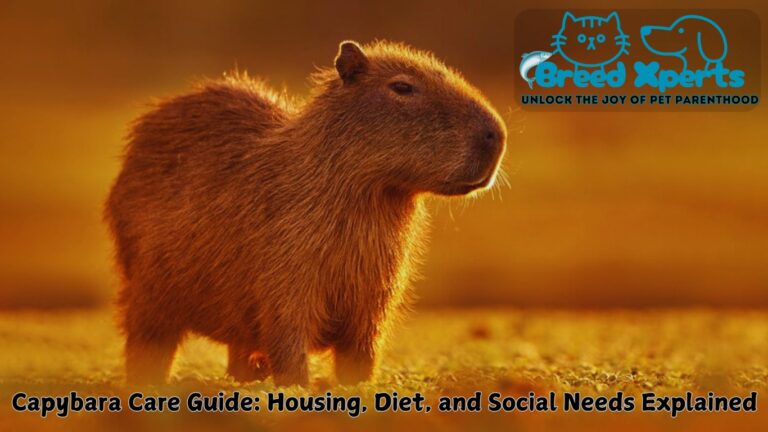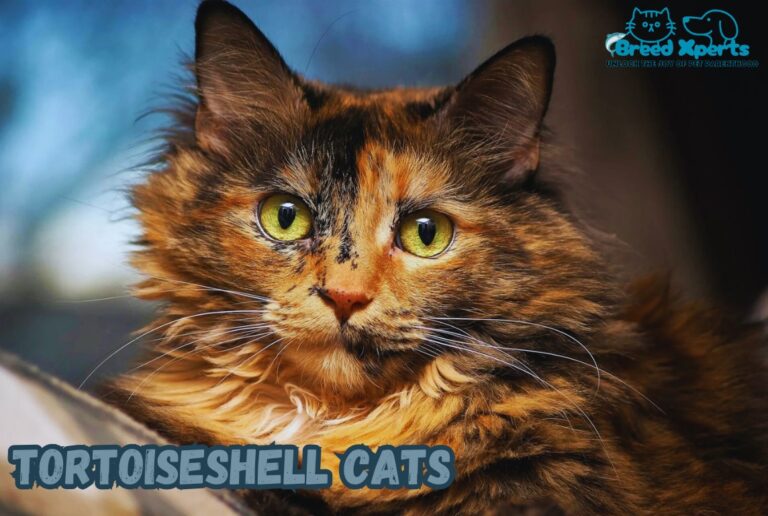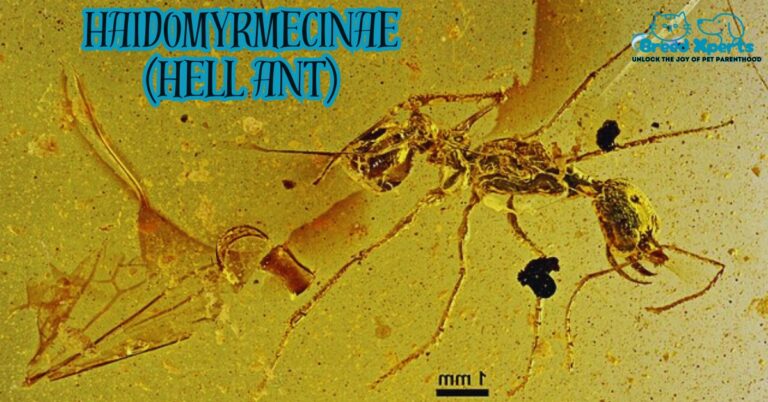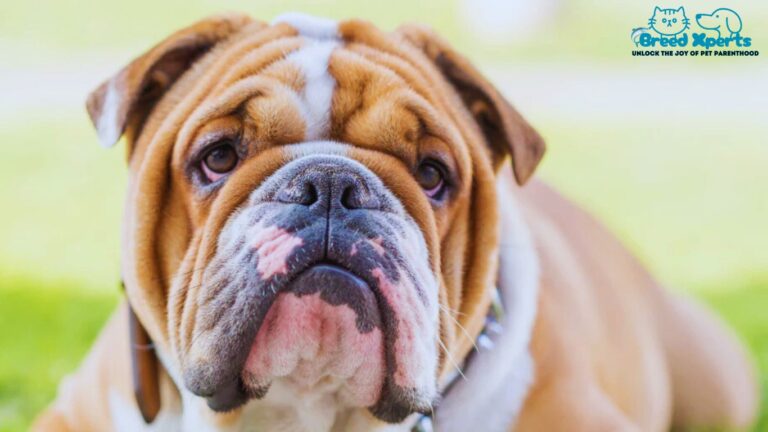Tabby Cats: Everything You Need to Know About These Adorable Felines
Tabby cats are one of the most loved and popular domesticated breeds. They are not considered a breed but can be distinguished through their specific coat pattern. A tabby cat is recognized by its striping, dotting, or swirling coat, often accompanying an “M” sign on its forehead. Cats in these breeds come in brown, gray, orange, and silver colors.
Sociable, lively, and full of character, tabby cats make fine companions. They were once known for their propensity to enjoy human company and be sociable. Their inquisitive nature often leads them to probe around, making them entertaining and interesting companions.
The term “tabby” has an origin in the striped designs on their fur, which mirror a silk variety from Baghdad known as “attabi.” Tabby cats, whether they are household pets or street-smart strays, have a certain kind of magic about them that captures everyone’s hearts.

Breed Overview
Personality: Friendly, independent, outgoing, adventurous
Weight: Up to 18 pounds
Length: Up to 40 inches
Coat Length: Short or long hair, depending on breed
Coat Colors: Brown, gray, orange, or black
Coat Patterns: Tabby
Eye Color: Green, gold, or blue
Lifespan: Up to 18 years
Hypoallergenic: No
Origin: Ancient Egypt
Diet & Nutrition
Tabby cats need a balanced diet to sustain their overall health and high energy levels. High-grade cat food, being rich in protein, is essential for proper growth and liveliness. Always choose food containing actual meat as the first ingredient.
Wet food, dry food, or a mix of these can be presented to your tabby. Wet food ensures that your cat never runs dry, while dry food supports healthy teeth in your cat. Make sure fresh water is always available for your cat.
Provide your tabby with no human food because some of the things are toxic, such as chocolate, onions, and raw fish. It is quite okay to give them treats in moderation but not as a replacement for meals. For your tabby cat to be happy and fit, it is essential to always follow portion recommendations to avoid overeating and obesity.
Lifespan
Tabby cats live for about 12 to 15 years. However, with proper care, these cats may be able to live longer than this period. Still, factors such as their diet, amount of physical activity, and schedules for the vet’s routine check-ups contribute to how long they live.
Indoor tabby cats live longer than those that go outdoors. Housebound cats are less exposed to some dangers such as mishaps or illnesses caused by other animals. They help in increasing the lifespan of your domestic shorthair cat.
A well-balanced diet, routine grooming, and caring conditions are important to ensure a long healthy life for your tabby. Their lifespan can be well sustained by plenty of opportunities for physical activity and mental challenges as they mature.
Size of Tabby Cats
The size of tabby cats can vary a little according to the breed and genetics. On average, tabby cats weigh 6 to 16 pounds. They typically measure 9 to 11 inches when fully developed.
Male tabby cats seem more considerable than their female counterparts. Some breeds, like Maine Coons, grow larger than others, and smaller breeds, such as Singapuras, remain small. Every tabby is unique because of the differences in size.
Proper diet and exercise can help your tabby to be at a healthy size. Overfeeding could lead to an increase in weight, which may affect their physical condition and well-being. Regular visits to the vet are certain ways of ensuring that they are developing well considering their age and breed.
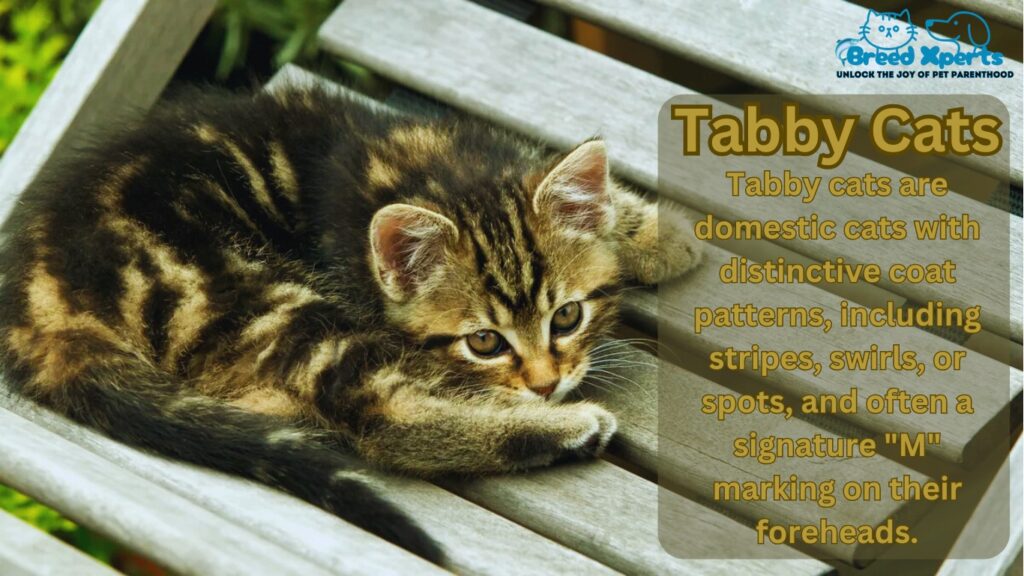
Habitat
Tabby cats can live in different environments, but they thrive best in safe, warm homes. They prefer snug cozy spots to sleep in, such as soft beds and sun-kissed windowsills, as well as active play areas.
Stray tabby cats in the wild adapt to the same surroundings. They live among cities, woodlands, or agricultural fields, seeking shelter beneath porches, in deserted structures, or even among trees for protection.
Provide toys, scratching posts, and hiding places to create an ideal living space for your tabby cat at home. Make sure the litter box is clean, and keep the water fresh. Keeping the environment free of stress helps your tabby feel more secure and happy about their living space.
Characteristics
Tabby cats are the most famous because of their distinct coat designs and markings. Many of them have patterns, such as stripes, spots, or swirls on their fur, a distinct “M” shape on their forehead, and that makes them very easily identifiable.
They are friendly and sociable, hence they make magnificent friends. Tabby cats are inquisitive and lively to a level where they will investigate everything around them or chase toys. Their loving nature is what makes them loved by families and individuals alike.
Tabby cats are also known to be very clever and malleable. They learn habits quickly and can easily adapt to new locations. They have strong personas, and it is truly lovable the way they are either snuggled up at home or quite playful.
Behavior and Temperament
Tabby cats are known to be extremely sociable and outgoing. They love the company of humans and usually tend to develop very affectionate bonds with their masters. Many tabby cats love cuddling and always like to express their love.
All in all, these cats are playful and curious by nature; they like investigating, playing with toys, and scaling furniture. This warm character makes them simply lovely and entertaining companions, especially for households with children.
Tabby cats are very intelligent and adjust comfortably to all kinds of situations. They quickly learn new behaviors and adapt to changes in their environment. Although they are generally social animals, some tabby cats like to have periods of solitude for quiet moments alone. Their unflappable nature has made them suitable for every living situation.
Housing
Tabby cats also prefer a safe, warm environment to keep them comfortable. Their living accommodation should have a comfortable resting place, which could be either a soft bed or clean blankets. They love sunny spots where they can lounge and sleep.
Make sure your tabby has sufficient space for roaming and exploring. Add scratching posts, climbing trees, and toys to provide them with entertainment activities. Cats are generally safe and protected if they have places to hide, such as enclosed beds or boxes.
Nip other potential dangers at home in the bud for your cat by removing poisonous plants and loose objects they might swallow. A basic need is a clean litter box, fresh water, and regular feeding locations. The best way to ensure your tabby feels at home and stays healthy is by creating an affectionate and secure environment.
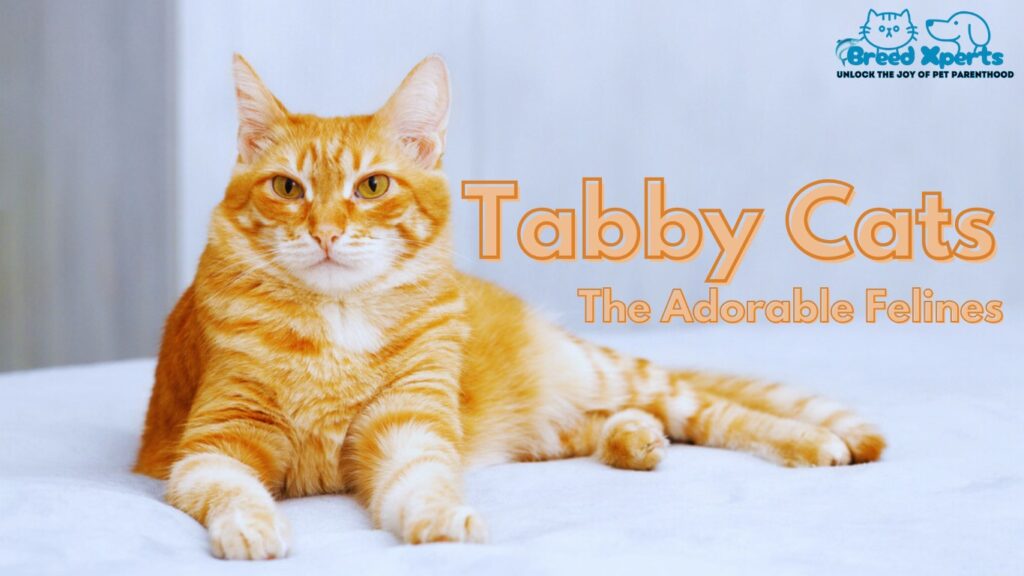
Humidity
Tabby cats adapt to various conditions of humidity but prefer moderate conditions. High or low humidity affects their comfort and well-being, especially concerning their skin and fur. A good indoor environment is preferred.
High humidity may cause discomfort to the tabby cat, potentially leading to skin problems or clumping of fur. To keep them comfortable, ensure there is sufficient ventilation, and it might be necessary to install a dehumidifier during hot and humid weather.
Tabby cats might develop dry skin or lose their fur in low-humidity environments. The humidifier lets you boost the humidity in the air. Regular grooming also helps to preserve their fur and help keep their skin healthy, regardless of the moisture level inside your house.
Breed History of Tabby Cats
There is no specific breed called Tabby. Instead, it is a common coat pattern in many breeds. The design dates back hundreds of years and is very common in pets.
There was once a thought that originally, Tabby cats came from the Middle East then to Europe and the rest of the world. Their unique patterns were admired by people living in ancient times.
Tabby cats share a history with the wild ancestors of domesticated cats, including the African wildcat. Since cats were domesticated, the tabby pattern transferred to all breeds over time, and today they have become such a popular and endearing pet.
Tabby Cats Training and Care
Tabby cats are smart and can learn with patience. Quickly picking up commands and tricks, especially when accompanied by rewards such as treats or praise, is usual for tabbies. Consistency helps them understand what to expect in terms of consequences.
An orange striped cat requires quality food fresh water and a litter box, and needs to be brushed regularly to prevent knots and keep its fur healthy if it has long hair.
Teaching your tabby cat good behavior involves training them to scratch on a post rather than on furniture. Exposing your cat to other people and playing with him is significant so that he stays mentally fit and happy. He should be seen by a vet at fixed intervals so his health is properly maintained.
Personality
Tabby cats are famous for their sociable behavior and affectionate personality. They enjoy companionship and most of them form close bonds with their carers. Countless tabby cats are loving and snuggle-loving, which makes them the best companions.
They are playful and inquisitive as well. Tabby cats love to explore their surroundings and often chase toys or climb onto furniture. Their playful activities can provide non-stop entertainment and engagement, especially in a family setting.
Tabby cats also have a level of intelligence and adaptability. They easily catch everyday rhythms and can readily handle new environments. Indeed, even though some tabby cats are lone animals, generally, they have a social personality built to gain from being part of the family’s activities.

Tabby Cats Health Problems
Health problems of Tabby cats, just like any other cat, are prone to health problems. Some common conditions usually include obesity, which can be prevented if the feline eats healthily and exercises regularly. Keeping your tabby active and fit is important to ensure its general well-being.
Another common health problem is the occurrence of dental caries. Brushing your cat’s teeth daily and providing her with dental chews are some means of helping to reduce the likelihood of plaque formation. Oral care should also be performed at a vet.
Depending on their breed, tabby cats may also have a higher propensity toward specific genetic health problems. For example, heart or kidney issues could be experienced by certain tabby breeds of cats. Routine veterinary care can help identify these conditions early so your tabby’s health can be monitored.
Appearance
Tabby cats are quite easy to identify because of the typical coat markings. Their fur coats often contain stripes, spots, or swirls. Many tabby cats have some sort of “M” shape on the forehead.
Tabby cats vary in colors ranging from brown, gray, orange to even silver. The length of their coats varies with the breed, from short to long. Some tabby cats have shiny, smooth coats; others possess thicker, fluffier coats.
Tabby cats do come in many sizes. Adult tabbies range in weight from 6 to 16 pounds, with bodies that are muscled and nimble and paired with large, expressive eyes that reflect their curious and playful nature.
Predators
Tabby cats, especially outdoor tabby cats, are exposed to many predators. They might face an even bigger creature such as a coyote, fox, or dog. It would be best to keep tabby cats indoors because these animals pose a significant danger to their safety.
Small tabby cats may also be vulnerable to some predatory birds, such as hawks and owls. They may dive down rapidly and try to snatch a cat if it is small or if it is alone outside. Supervising your tabby cat outdoors can minimize this exposure.
More risks are presented by larger species, such as bobcats or mountain lions, depending on the area. These cats can view the smaller tabby cats as prey. In this regard, the most effective way to safeguard tabby cats is by keeping them indoors or within secure enclosures.
Breed Overview
Tabby cats are not a breed per se but represent a common coat pattern seen in several breeds of cats. It has stripes, spots, or swirls and is characterized by an “M” shape on its forehead.
Stripes are found in most breeds of cats, such as the American Shorthair, British Shorthair, and Maine Coon. They come in many colors, such as brown, gray, orange, and silver. The length of the coats varied among breeds, such as short coats and long coats.
These tabby cats are truly affectionate and lively. They often manifest affectionate nature and remain closely knit to their owners. Their liveliness and engaging nature along with their intelligence and curiosity have led many to consider them great pets for families or individuals.

Further Research
There are also so many online resources and books that depict different information about tabby cats. Studying the background and different fur designs will give a clue to the distinctive characteristics of tabby cats.
You can also find all the different breeds that usually possess the tabby coat pattern. Maine Coon, Bengal, and American Shorthair are some breeds with unique patterns of tabbies. Each kind of cat has its specific features to take into account, and further research will guide you in choosing the ideal feline friend for your home.
Understanding the health and behavior of tabby cats is something that all owners should know. The knowledge of normal health issues, training tips, and proper care will keep your tabby cheerful and well for many years. Further advice can be received from veterinarians and pet care specialists.
Interesting Facts
Tabby Cats and Their Unique Coats:
Tabby cats boast highly interesting fur patterns. Their coats often show stripes, spots, or swirls, which makes them pretty recognizable. Most tabbies also feature a characteristic “M” shape on their forehead. This is typical for many feral cats, like tigers and cheetahs.
Tabbies Are in Many Breeds:
Tabby is not a breed, but rather a coat pattern. Tabby cats can be found in almost all breeds – from the housework variety to Maine Coons. The patterns come in various colors: orange, gray, or brown.
Friendly and Playful Nature:
Tabby cats are known to be very playful and social. They are close to people and enjoy playing games with them. Many owners report that their tabby is talkative, often meowing sweetly during conversations.
Population
Tabby Cats Are Everywhere:
The vast majority of cats found anywhere in the world are from the tabby breed. Their specific coat patterns are due to a dominant gene. Of course, tabby cats appear in households, shelters, and even wandering on streets.
Found in Many Breeds:
Tabby cats appear in almost every breed of domesticated cat, which gives rise to a very diverse population. From housecat to purebred Maine Coon, you can find tabby patterns on cats that come in different shapes and sizes.
Popular Among Pet Owners:
Several families prefer tabby cats as pets because of their gentle nature and unique appearance. This sets them to be found in large quantities by anyone willing to take them in. Numerous shelters and rescues have plenty of tabby cats waiting for loving homes.
Reproduction/Breeding
Tabby Cats Pass on Their Patterns:
Tabby cats inherit their specific coat pattern from dominant genes. When a tabby cat breeds, generally one kitten in the litter will receive the tabby pattern, which is a common feature.
Tabbies Can Breed With Any Cat:
Tabby cats can breed with any other domestic cat. The patterns are always included in the kittens, regardless of the color of the other parent. A litter of kittens can have stripes, spots, or swirling, depending on what each gene brings to the kitten from one parent or both parents in combination.
Breeding Is Not Breed-Specific:
Tabby does not require specific breeding because it is a coat pattern, not a specific breed. Still, responsible breeding ensures that kittens are healthy. Each year, there are thousands of tabbies, purebred and mixed-breed alike, adding to the already plentiful population of tabbies.
Pros & Cons as a Pet
Benefits of Having a Tabby Cat:
Tabby cats are social, playful, and a great companion. They become attached to a household and easily cope with different living conditions. Their beautiful coat patterns and cute nature have made them a favorite choice for all those who like animals.
Disadvantages of having a Tabby Cat:
Just like all felines, tabby felines do require regular petting and attention. Some might be too chatty or playful. They can get into scratches on furniture, and so forth, without better education or stimulation.
FAQ:
What makes a cat a tabby cat?
A tabby cat, also known as tabby, is a domestic cat (Felis catus) that has recognizable M-shaped marking on its forehead, stripes near its eyes and across its cheeks, along its back, around its legs and tail, and distinctive striped, dotted, lined, flecked, banded, or swirled patterns on the body: neck, shoulders & sides.
How rare is a tabby cat?
Are tabby cats common or rare?
Tabby cats are widely recognized as the most prevalent type of cats. This is because tabbies come in numerous cat breeds. Tabby cats are defined by the presence of tabby patterns in their fur, regardless of their fur color or breed.
Is a tabby cat a friendly cat?
Even though it’s challenging to make broad statements about tabbies due to their diverse origins, numerous owners of tabby cats report that their pets are sociable, loving, and lively.
Are tabby male or female?
The most common tabby fur is black, however, there are different pigments giving rise to black, orange, and gray tabbies. Unsurprisingly, most orange tabby cats are male, with only about 20-25% being female.
Are tabby cats intelligent?
Tabby cats are known for their high intelligence. Having a clever cat as a pet can be advantageous for pet owners. Your small tiger will soon become accustomed to utilizing the litter box and will be darting through the pet door before you know it. It is possible to teach your cat some tricks.
What is the lifespan of a tabby cat?
Between 12 and 15 Years
How long do tabby cats live?
The life span of a cat can vary depending on its breed. Tabby cats are a common choice among pet owners, therefore, what is the typical lifespan of domestic shorthair tabby cats? Some tabby cats can live beyond 15 years, with average life expectancy ranging from 12 to 15 years.
How to tell a cat’s gender?
Raise the tail of the kitten. The anus is located directly below the tail. The genital opening is located beneath the anus, appearing as a circular shape in males and a vertical slit in females. In male kittens of similar size, the distance between the anus and the genital opening is longer than in female kittens.
What is the rarest cat color?
Albino
Out of all the colors cats can have, albino is the least common. Albinism results in no pigment, leading to cats having pink skin, white fur, and light blue or pink eyes. To be albino, a cat needs to receive two recessive genes for albinism (A/A), one from each parent.
What do tabby cats eat?
Incorporating wet food and raw meat like sardines and mackerel provides essential nutrients for your tabby and satisfies their taste preferences. It is suggested to include dry foods in your cat’s diet to help maintain good dental hygiene, as chewing on them can help remove plaque. Do not ever give them uncooked chicken.
How do tabby cats show love?
Cats frequently display their love and affection through purring, head bunting, and rolling onto their backs.


